Archive for June 2024
The Breakup of Microsoft … That Never Happened
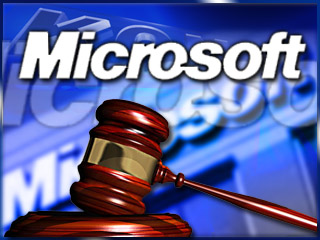
June 7, 2000
United States District Judge Thomas Penfield Jackson orders the breakup of Microsoft into two companies: one that will develop operating systems and one that will develop other applications. Microsoft immediately announces that it will file an appeal of the judgment. What would have been a monumental event in the history of the technology industry never actually happens, however. The ruling is overturned just over a year later. Microsoft will be sanctioned, but it stays one company.
Really Geeky Modem Technology Patented
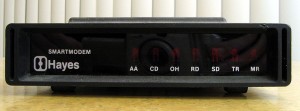 June 7, 1983
June 7, 1983
Michael Eaton is granted a patent for the AT Command Set for Modems, which had created a standard language for interacting with modems. Two years earlier, the rights for this command set were purchased by the Hayes Corporation and incorporated into the Hayes Smartmodem 300 as the “Hayes Command Set.” The protocol will become an industry standard used for years to come.
In the early 90’s, needing to use modems so that I could connect to pre-Internet bulletin board systems, I learned the AT command set. I then used and supported modems extensively for about 15 years, and occasionally still do. Because I worked with modems so much, I used to be able to speak the AT command set in my sleep. I know, it impresses the ladies.
Palm Pre Released
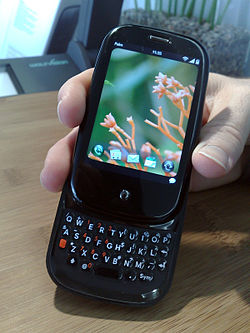 June 6, 2009
June 6, 2009
Palm, Inc. releases the Palm Pre smartphone through Sprint in an attempt to regain marketshare, after their Treo line of smartphones is dwarfed by Apple’s iPhone. Featuring the Linux-based Palm webOS operating system, the Pre receives some praise from technical reviewers, but due to poor marketing and the rapid pace in which Apple dominates the New World of smartphones, Palm’s series of phones and the webOS never really have a chance to gain a foothold. Within the course of one year, Palm is purchased by HP for $1.2 billion. One year later, after just 2 months of abysmal sales of their TouchPad tablets, HP halted production of all webOS-based devices. HP later released webOS under an open source license, sold the operating system to electronics manufacturer LG, and the webOS and Palm patents to Qualcomm. Today, LG licenses webOS from Qualcomm as the operating system for their smart televisions, smart refrigerators, and smart projectors. webOS also lives on in open source form.
The Mac Gets Intel Inside
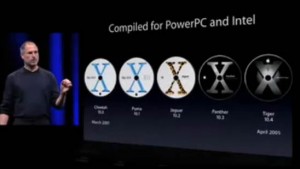 June 6, 2005
June 6, 2005
In a keynote address at Apple’s Worldwide Developers Conference, Steve Jobs announces that Macintosh computers will transition from PowerPC to Intel processors and demonstrates Mac OS X running on a computer with an Intel Pentium 4 processor. Jobs revealed at the time that Apple had been secretly preparing for a possible transition to Intel for many years. Unbeknownst to the public, for every version of Mac OS X released, Apple actually had prepared a version running on an Intel processor. By making the transition to Intel, Apple paved the way for the resurgence of the Macintosh computer by making it more compatible with software for Microsoft Windows.
Tetris is Born
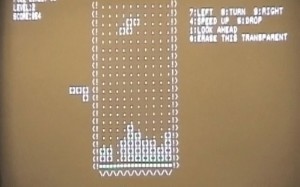 June 6, 1984
June 6, 1984
Alexey Pajitnov first releases the game Tetris in the USSR. Tetris will become one of the most popular puzzle video games of all time. Originally programmed for a Soviet-built Elektronika 60 computer, the game was soon ported to the IBM PC, where it spread quickly throughout Moscow and the rest of the USSR. Eventually making its way to Hungary, from there the game was discovered and questionable attempts to license it for sale by various software companies were made. By 1989, half a dozen different companies claimed rights to create and distribute the Tetris software for home computers, game consoles, and handheld systems. Several highly complex and drawn out legal battles ensued in the following years to settle who had the rightful licenses and authority to sell the Tetris game in various formats and countries around the world. Ironically, Pajitnov himself was not able to make any money on Tetris for years because as an employee for the Soviet government, the Soviet State ended up owning the rights. It was only when the rights reverted from the old Soviet government to Pajitnov and he moved to the US in 1996 that he was able to form a company and collect royalties. Then he went on to work for Microsoft … trading one oppressive regime for another it would seem!
The Apple II Enters the Market
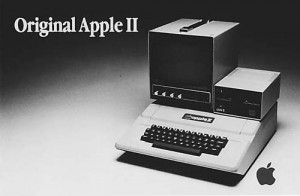 June 5, 1977
June 5, 1977
The original Apple II computer goes on sale. The Apple II featured an a 1MHz MOS 6502 processor, an integrated keyboard, a built-in BASIC programming environment, expandable memory (4K expandable to 48K), a monitor capable of color graphics, a sound card, and eight expansion slots. To include all these features in one discrete unit was highly innovative and the reason it is considered the first practical personal computer. However, in the spirit of the original computer hacker, the Apple II was also available as a circuit-board only, without keyboard, power supply, or case. A couple of years later, the combination of the Apple II series and the first “killer app” of the business world, the VisiCalc spreadsheet program, popularizes personal computers among business users. This sudden success of the “home computer” in the business world surprises established technology companies and eventually leads IBM to scramble to develop their IBM PC.
VHS Introduced to America
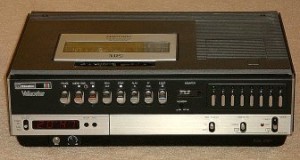 June 4, 1977
June 4, 1977
The VHS videocassette format is introduced as Vidstar in North America at a press conference before the Consumer Electronics Show starts in Chicago. VHS, or Video Home System, was based on an open standard developed by JVC in 1976. As compared to the Sony Betamax format it would compete against, VHS allowed longer playtime, faster rewinding, and fast-forwarding.
Would You Like to Play a Game?
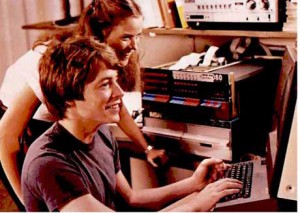 June 3, 1983
June 3, 1983
The science fiction film WarGames is released. Notable for bringing the hacking phenomena to the attention of the American public, it ignites a media sensation regarding the hacker sub-culture. The film’s NORAD set is the most expensive ever built at the time at a cost of $1 million dollars. Not widely known is that the movie studio provided the film’s star, Matthew Broderick, with the arcade games Galaga and Galaxian so he could get first-hand experience before shooting the film’s arcade scenes.
US Soft Lands on Moon
 June 2, 1966
June 2, 1966
NASA’s lunar lander Surveyor 1 lands in Oceanus Procellarum (“Ocean of Storms”) on the Moon, becoming the first US spacecraft to soft-land on an extraterrestrial body. The previous Ranger program sent craft that had hard-landings (i.e. crash landings). However, the Soviet spacecraft, Luna 9, claims the honor of being the first to soft-land on the moon, almost exactly 4 months prior to Surveyor 1.
The Day the Music Industry Changed Forever
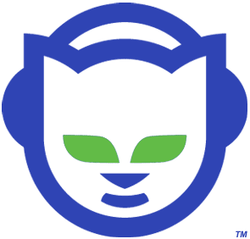 June 1, 1999
June 1, 1999
Shawn Fanning and Sean Parker release the filesharing service Napster. The service provides a simple way for users to copy and distribute MP3 music files. It becomes an instant hit, especially among college students. Just over 6 months later, on December 7, 1999, the Recording Industry Association of America (RIAA) will file a lawsuit against the service, alleging mass copyright infringement. Eventually this lawsuit will force the shutdown of the company on September 3, 2002, but not before the popularity of downloading digital music is firmly entrenched in a generation of Internet users.
